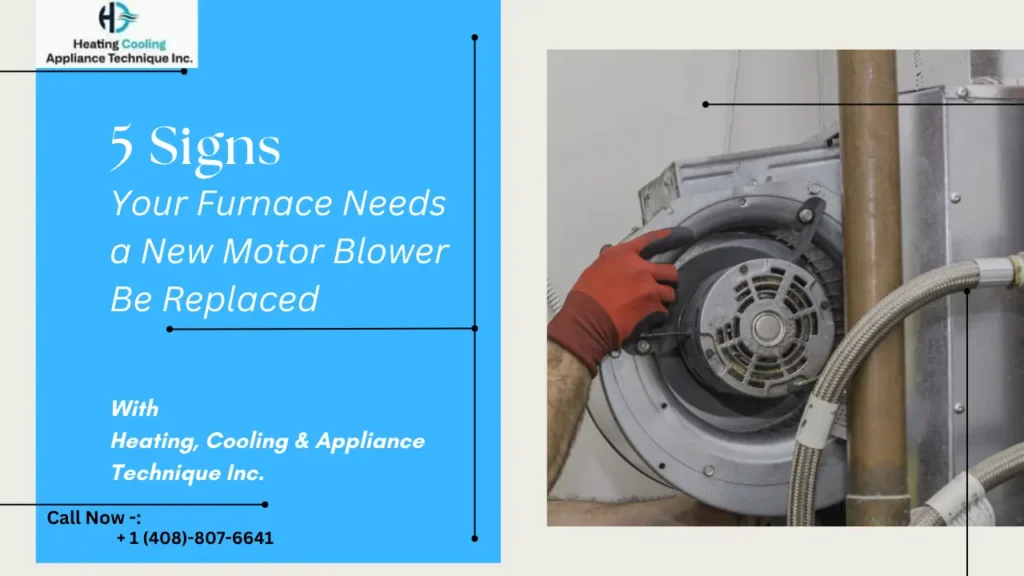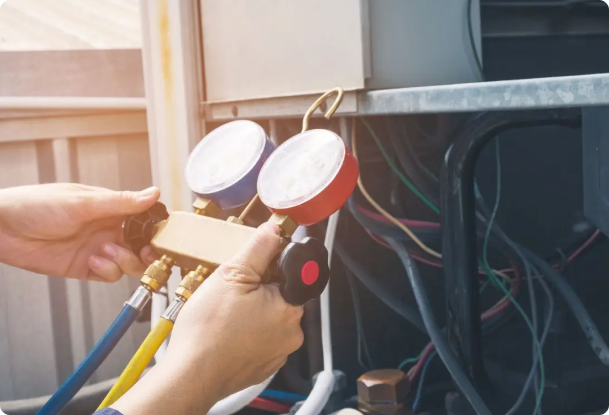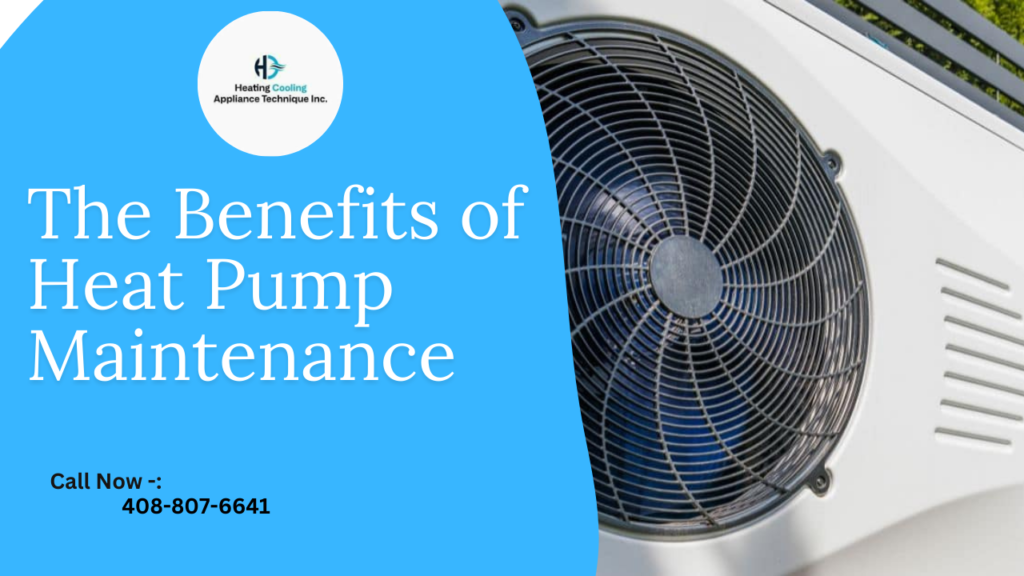Furnaces are vital for cozy winters, so a malfunctioning blower motor is the last thing you want
when it’s cold. Unfortunately, wear and tear are inevitable with any appliance used as frequently as a furnace. Be prepared, as this issue affects almost every HVAC system component over time.

How Furnace Blower Motors Work
Furnace blower motors are crucial to your home’s heating, ventilation, and air conditioning (HVAC) system. Understanding how these motors work can help you better identify issues and ensure the efficient operation of your furnace.
There are main types of drives in furnace blower motors
1. Direct Drive
Direct drive systems, also known as single-speed or fixed-speed motors are the simplest and most common drive type used in furnace blower motors. In an explicit drive configuration, the motor is directly connected to the fan blades, resulting in a one-to-one ratio between motor speed and fan speed.
2. Belt Drive
Belt drive systems connect the motor to the fan blades using a belt and pulley arrangement. This configuration allows for more flexibility in controlling the fan’s speed by adjusting the pulleys’ size. Belt drive motors offer variable speed options, allowing for precise airflow control and energy efficiency.
3.Variable Frequency Drive (VFD)
Variable frequency drives (VFDs) are electronic devices that control the speed of the motor by adjusting the frequency of the electrical power supplied to it. VFDs offer the most precise control over motor speed and are highly efficient, allowing for significant energy savings compared to fixed-speed motors.
With Residential Furnace Blower Motors, There Are Also Two Types of Speeds:
Residential furnace blower motors commonly feature two speeds: single-speed and multi-speed. Understanding the differences between these two-speed options can help homeowners make informed decisions about their HVAC systems.
Single-Speed Motors
Single-speed motors operate at a fixed speed, typically at maximum capacity, regardless of the heating or cooling demands of the home.
Multi-Speed Motors
Multi-speed motors offer greater flexibility in controlling the airflow of the HVAC system by providing multiple speed options.
What Are Signs Your Blower Motor Needs to Be Replaced?
1. Lack of Airflow from the Vents
If you notice a lack of airflow from the vents, it’s typically the first and most obvious sign that your blower motor is experiencing a problem. However, this doesn’t necessarily mean an immediate need for a replacement motor. Several factors could contribute to this issue. It’s possible that the engine is clogged with dirt and dust, or it may be malfunctioning due to a Bad capacitor. Additionally, leaky air ducts could also impede airflow.
2. Limited Airflow from Air Vents
This serves as the initial signal that your blower motor requires attention. Other factors contributing to inadequate airflow from your air vents include faulty capacitors, air duct leaks, or accumulation of dirt. Furthermore, if the motor experiences excessive moisture, it can reduce airflow.
3. Skyrocketing Energy Bills
The blower motor is the component in a central HVAC system that consumes the most energy. If you already have a variable-speed blower motor in your furnace, and the engine is not clogged with debris, the motor may be wearing down and approaching the end of its life. Dirty blowers need to work harder to push conditioned air through your air ducts, which can also indicate deteriorating blower motor. It is also possible that your air ducts have a significant leak.
4. Overheating Blower
If your furnace motor blower is overheating; it is a sign that you need another one. An overheating motor blower is often identifiable by a funny smell from the air vents.
5. Weird Noises
Sometimes, you may experience strange noises when you are operating your furnace. These might be in the form of clanking, squealing, rattling, or screeching. When this happens, calling your heating contractor will be the next best thing. Screeching and squealing sounds are indicators of bearing issues in the drive furnaces.
Change Your Furnace Blower Motor
Your local licensed HVAC contractor can help you find and install the correct blower motor for your HVAC system. The heating contractor must get some information about your furnace and consider a few things, including the type of drive, the diameter of the motor, rotation direction, horsepower, voltage, speeds, and the size of the capacitor. Based on these details, the HVAC company can make a suitable recommendation, give you an estimate, and schedule an installation.



